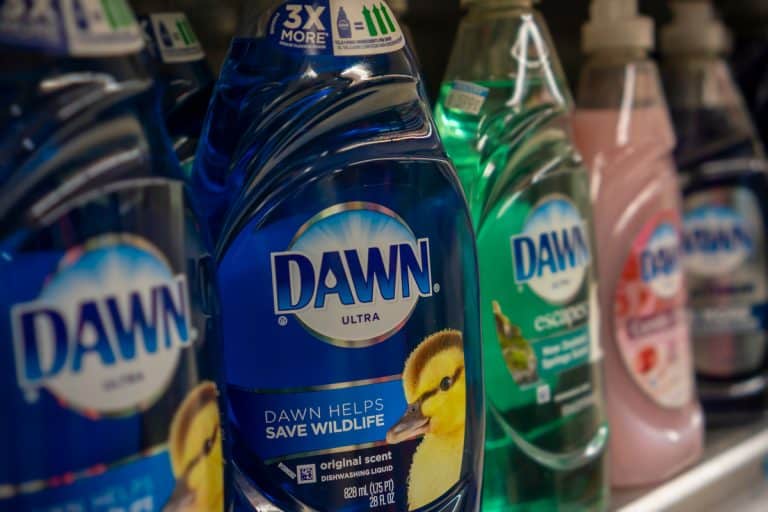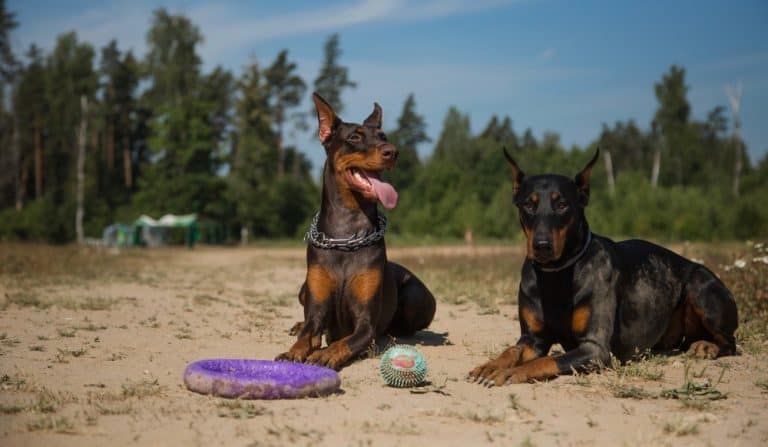Crusty Scabs Around My Dog’s Mouth – Symptoms & Causes
While touching or playing with your dog, you may notice areas of crusty scabs around his mouth.
If you are one of those people, who have seen crusty scabs around your dog’s mouth, then you know that it is not something to take lightly.
Crusty scabs always mean that there is some issue affecting your dog that needs your attention.
These crusty scabs may be a result of dog acne, irregular hormone regulation, abnormal diet, skin infections, or allergies.
A common symptom associated with crusty scabs is lip fold dermatitis. They mostly plague dog breeds that have folds in their skin such as Shar-Peis or English bulldogs.
Whenever your dog has crusty scabs around its mouth the problem is usually exacerbated by actions to irritate affected areas like licking, biting, or scratching.
There are a number of topical ointments used to treat this condition, but it is important to find out exactly what is happening by paying a visit to your veterinarian who can give you solid advice.
In most cases, crusty scabs are not lethal to your dog, so there is no need to panic, but it could be an indication of other issues that are affecting him.
These could also be serious. This is why you should seek medical attention to know for sure.
We will discuss crusty scabs and issues surrounding them so that you can arm yourself with more knowledge about how to diagnose and treat them.
What Are Crusty Scabs? And What Do They Look Like?
Crusty scabs may look different according to the dog in question, but most of the time they look like scabs or blisters that are flaky and dry, or they may look like bumps.
They may be more visible and patchy on short-haired dogs. But for dogs with longer and thicker fur, you may only see them when you push the fur aside to examine the skin.
Dogs usually get sores and dry skin that develop into crusty scabs. The scabs become painful and bothersome as the dogs itch.
Why Are There Crusty Scabs Around My Dog’s Mouth?
Most times, if your dog has a crusty mouth or sores it is because of some type of nutritional deficiency, hormonal imbalance, or simple dehydration.
Because of these issues, they are unable to form new skin layers that would replace the old dry ones. Not only that, but the damaged skin makes it prone to infections and leads to the formation of sores.
Skin disease and sores around the mouth area may also be because of canine acne, allergic reactions, or infection which irritates the skin when your dog scratches or bites the area.
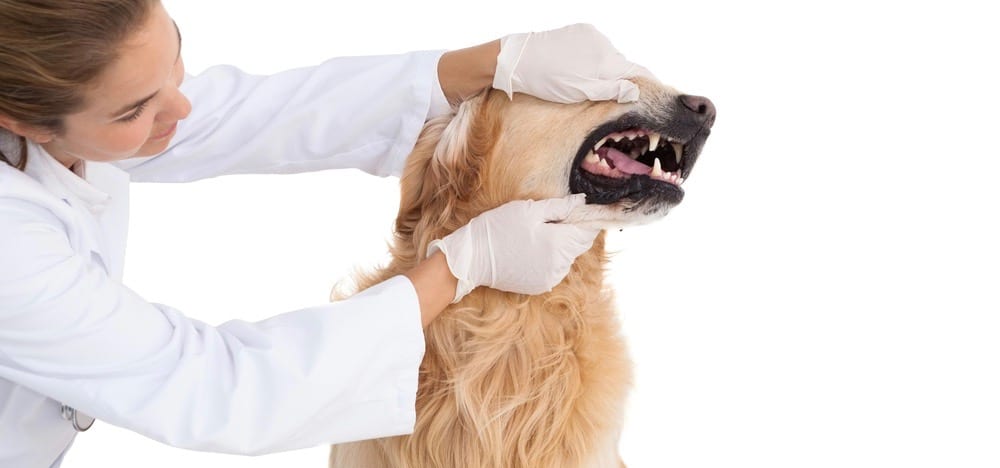
Canine Acne
These look like sores or pimples in the mouth area, some dogs even have swollen lips with blood oozing out of it. Some dogs are simply predisposed to acne which causes the area to be inflamed.
If canine acne is not treated swiftly, and effectively it can lead to serious infections and other complications.
Nutrient Deficiencies
Even though all the nutrients are important to maintain your dog’s overall health, there are a few nutrients such as vitamin B, vitamin B2, and Zinc that maintain healthy skin and good oral health.
Without adequate amounts of vitamin B, your dog can have an inflamed tongue and a crusty mouth along with anemia in severe cases. For collagen maintenance, he also means vitamin B2.
Zinc helps to manage healthy skin as well as produce new cells. Nutritional deficiencies can result in weaker skin that is more prone to infection.
Hormonal Imbalances
Hormonal imbalances are usually hereditary such as Cushing’s Disease and hypothyroidism. Sometimes your dog may have a tumor that can affect his hormones.
This can be corrected by the removal of the tumors and certain medications. The hormonal imbalance is seen as a lifelong condition that needs to be monitored constantly along with regular check-ups.
Dehydration
Water is crucial to have in the diets of pets and humans. Without adequate water, your dog cannot be healthy enough to complete cell development and renewal.
Inadequate water causes dry, crusty, and tight skin. And this leads to skin infections and sores in the mouth area.
If you notice about your dog’s stool is crumbly and dry he may be dehydrated. It is okay to free-feed your dog with water especially in hotter climates.
Allergies
Your dog can have an allergic reaction like canine atopic dermatitis which leads to the development of sores around the mouth that eventually becomes scabs when your dog scratches it.
This condition is hereditary. Allergic reactions may come from airborne substances such as pollen, dust, or harmful chemicals in cleaning products or shampoos. Make sure to keep these chemicals away from your dog.
Infections
If your dog has a bacterial infection it can irritate the skin and create scabs and sores. Bacterial infections can be caused by your dog’s scratching chewing or biting.
After a while, this causes a wound that may become infected. There will be crusty scabs in the affected area. There are also fungal infections like ringworm that can cause scabs and sores here.
How Can I Prevent Crusty Scabs On My Dog?
You should figure out the root cause of the crusty scabs in order to prevent them. You can do this with a simple visit to your veterinarian.
Along with your vet, you can figure out the best treatments for your dog based on his habits and lifestyle.
Healthy diet
Nutritional deficiencies can affect your dog and create problems with his coat and skin. A lack of essential vitamins and minerals can cause dry itchy skin.
It is in the best interest of your dog to be fed a balanced diet so that these problems do not occur. If the nutrients cannot be sourced from is daily meals then you can look into multivitamins that can be supplemented.
Fish oil/skin and coat supplements
Even if you feed your dog a balanced diet may still have issues, so supplements specifically directed toward the coat and skin may be necessary such as Omega 3 and 6.
Frequent brushing
Regularly brushing your dog’s coat, will help to get rid of flaky patches and dead skin cells. These usually cause irritation that leads to other more serious conditions.

This can all be prevented by simple grooming and maintenance. By doing this, you will reduce the chances of irritation that are caused by dirt build-up.
Frequent bathing
If you leave your dog regularly you can also reduce the likelihood of unhealthy bacteria or sebum buildup which leads to crusty scabs.
Regularly bathing your dog with a good shampoo that is not too harsh can help to make their skin and coat healthy.
Remember that you should not overdo it because bathing your dog too much can strip them of their natural oils. Once per week is a good frequency.
Does My Dog Have Lip Fold Dermatitis?
Crusty scabs and sores around the mouth may come from lip fold dermatitis. Dog breeds like Springer Spaniels and the Bulldogs are particularly susceptible because they have skin folds and droopy skin in general.
The environment created within the lip folds is moist and warm because of saliva and food remnants.
This creates an ideal environment for the growth of bacteria and yeast. You may notice an infection around your dog’s mouth because he may scratch it, or it may be swollen.
Sometimes there may be a bad smell coming from the infected area that is inflamed. This condition can lead to worsening symptoms such as discoloration, hair loss, scabs, and sores. And make also cause your dog to be in great pain.
In extreme cases of lip fold dermatitis, your dog may need lip fold surgery so that the affected area can be removed.
Aftercare of this surgery is particularly long as you will need to closely monitor your dog so that he does not injure the affected area with rough play and too much chewing.
How Do I Treat Crusty Scabs On My Dog?
First of all, you need to identify the root cause of the problem to treat your dog’s crusty scabs. The best way to do this is by taking him to the veterinarian who will run a series of tests to determine the cause of the problem.
He may examine using fungal and bacterial cultures, skin biopsies, and allergy testing.
He may prescribe a few topical ointments like aloe vera or coconut oil bad happened known to reduce the effects of inflammation while softening the skin.
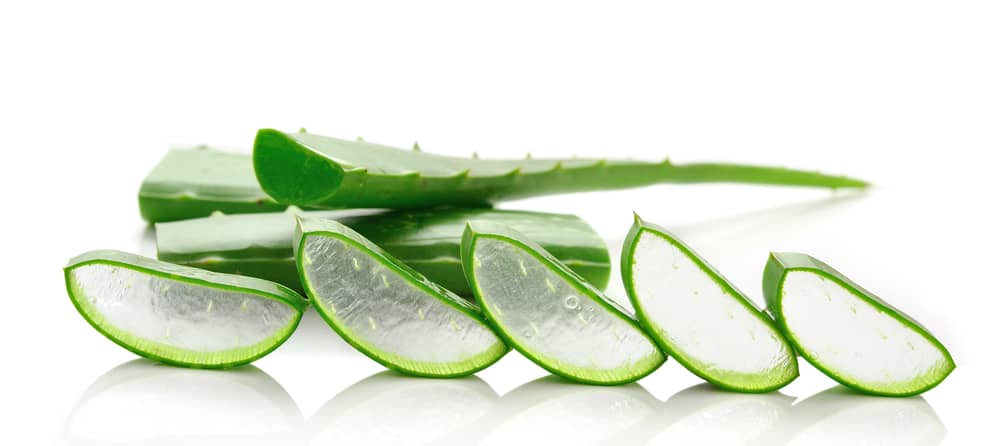
Keep in mind that dogs usually lick medication that is placed under so options such as Penaten, Aquaphor and Vaseline can affect your dog if too much is licked off.
It may be a long road to get rid of your dog’s crusty scabs because dogs have a tendency 2 irritate the affected area constantly.
You can try E-collars so that he will not continue to injure himself. Before using any treatment on your dog you should consult with your vet.
Are There Natural Remedies For Crusty Scabs?
These are strategies that target the Crusty skin naturally by eating a healthy diet, natural topical treatments, or the application of warm compresses.
Vitamin E Oil
This is a good treatment for crusty scabs because it is an antioxidant and anti-inflammatory remedy that also supports the immune system and helps to regenerate new cells.
Use it 2 to 3 times per day on the crusty scabs which will soften them and make them fall away as time goes by. New and healthy skin is replaced after a while.
Cold or Warm Compress
This may seem like a simple procedure, but it can be very helpful to slow information, reduce sore swelling and itchiness. Your dog may be less likely to scratch the crusty skin using this method.
Warm compresses can also regenerate skin cells by increasing blood flow in affected areas which can help to distribute the nutrients needed for the renewal of cells.
Use a wet cloth to temporarily relieve the itchiness of the crusty scabs and renew the skin.
Diet
A well-balanced diet is crucial to your dog if he is to form new skin cells when the crusty scabs are removed. These are nutrients such as Selenium, B-Complex, Omega 3, Zinc, and Vitamin A.
Your dog also needs a lot of water so that these nutrients can be effective. Lack of water results in poor skin health and a weak immune system.
What Are The Medicated Treatments For Crusty Scabs?
There are a few medicated solutions to treat your dog’s crusty scabs which seek to get rid of bacterial fungus all parasites, reduce inflammation, and retain water in the skin.
It is also important to see a vet before any decision is made about treatment.
Products for Water-Retention
Medicated ointments like Sudocrem and E45 can help to hydrate this skin and retain moisture by creating a protective layer. Most of these treatments have something called liquid paraffin.
They worked by softening the skin and forming a protective barrier to stop water loss and thus dry skin.
Many of the treatments also contain zinc and vitamin E which are great for the skin as well. these treatments are also effective for helping with canine acne
Anti-inflammatory products
Steroids can help to prevent and reduce swelling and inflammation because they stop chemicals causing itchy, painful, and irritated skin.
And drugs like Benadryl can help with allergy symptoms because it is an antihistamine for itchiness and rashes.
Only the tablet form can be taken by dogs since the syrup version is toxic to them because it contains alcohol.
Topical treatments like benzoyl peroxide are also anti-inflammatory, iodized, and antiseptic used to fight canine acne by flushing hair follicles and removing bacteria. They are usually used along with topical and oral steroids.
Skincare products
Some products treat parasites fungus and bacteria, but these treatments require a long time before your dog is completely healed.
They are usually given orally and topically at the same time. some treatments can stop the growth of fungi, and they are used with shampoos that are antifungal.
To treat scabs, bacterial, antibiotic, and antibacterial medications are used topically along with frequent baths. Antibacterial soap assists with the removal of bacteria in the skin.
There are also antiparasitic remedies and that remove parasites through regular cleaning. For parasites, the medication will be a bit different, so you should consult your veterinarian.
Usually, they prescribed medication that comes in the form of powders, or sprays.
FAQ’s
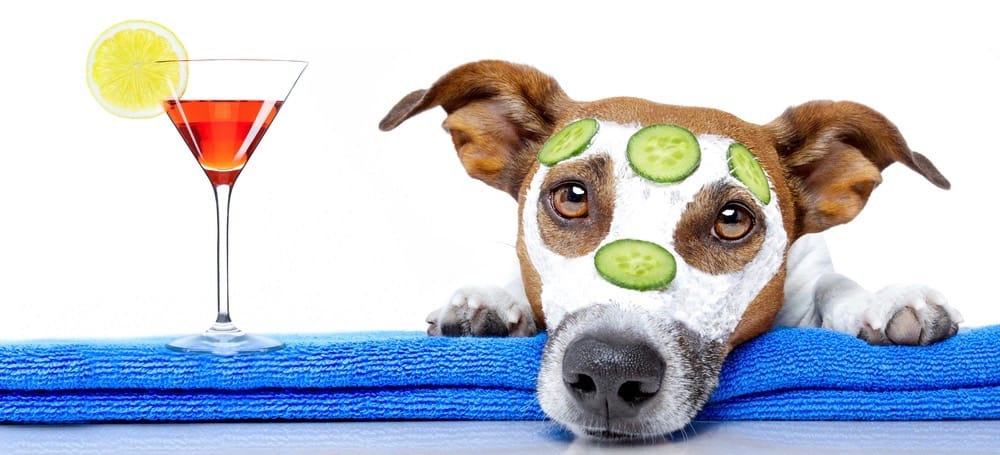
Where on a dog’s body do crusty scabs most commonly occur?
The neck and back area of the most common places that crusty scabs can form on your dog’s body.
When your dog has creases in the skin is more that results in crusty scabs. These types of scabs may manifest themselves more on the upper legs and belly.
Are crusty scabs more likely to appear in specific breeds/ages/sizes?
Even though crusty scabs may affect any dog breed, there are certain dog breeds of a particular age and size that have a difficult time recovering from crusty scabs.
As we stated before there are many causes of the scabs based on the dog breed but any dogs with loose skin, floppy ears, and extra weight may have a harder time recovering from crusty scabs.
Additionally, older dogs also take longer to recover from the condition because their skin is coarser due to old age. They also tend to be less hydrated.
What other symptoms might appear alongside crusty scabs?
You can expect redness, itching, and soreness two present themselves along with crusty scabs. Some dogs may even experience bleeding.
If there is an underlying condition that is affecting your dogs like fungal infection or a hormonal imbalance then this may likely affect their behavior. Some dogs have reduced appetite and energy levels. You can also look out for bald spots or insect bites.
Why are Crusty scabs sometimes called hot spots?
You will sometimes hear crusty scabs being referred to as hot spots because hot spots are a type of crusty scab in canines.
Hotspots usually take the form of red infected and inflamed areas of the skin.
You may find that your dog is itching especially in these areas but not all of them do. Sometimes these hot spots may create a bad odor.
Crusty scabs are a bit different because they usually do not cause breakage in the skin in the same way.
Do ticks leave scabs on dogs?
Ticks usually nest into the dog’s skin and survive on the blood causing your dog to itch and leaving behind irritated skin and scabs.
These ticks can be removed, but you must look carefully for them and remember to remove the head as this can remain on the skin leading to infection.
How do I find crusty scabs on my pet?
Many dog owners find crusty scabs on their pets when they are stroking them. This is a good way to examine their skin and create a special bond with your dog.
The affected areas will be crusty and rough, and you may notice that your dog may flinch when you touch the area.
To examine your dog for crusty scabs you will need to move the hair aside and gently rub the area to expose the affected skin.
How long does it take for a dog scab to heal?
The length of time crusty scabs take to heal depends on the scab severity and what has caused the scab. Scabs may heal in about 3 to 14 days depending on the situation however there are instances where they take much longer.
Also, remember that scabs can occur because your dog keeps scratching them. Scabs that are healing may need to wait until the underlying issue is solved such as allergies, hormonal imbalances, fleas, and irritation.
Can I put Neosporin on my dog’s scabs?
Since Neosporin was created to treat humans, it is not recommended for dogs. That said, using a small amount will not greatly harm your dog, but you should avoid using this product on dogs until you have consulted with your veterinarian.
Some waxes and balms are specially designed to treat dogs but to be should be prescribed by your veterinarian. Additionally, it is never good to use treatment before understanding the underlying cause of the crusty scab.
Can I put Vaseline on my dog’s scabs?
Even though Vaseline may not help your dog very much, it is safe to apply to the scabs. At most, it may provide soothing relief to them momentarily.
But be careful that the Vaseline does not over-dry the scab. A better option will be a salve or balm that was specifically created to treat dog scabs. Remember that your veterinarian should be included and all these decisions.
Final Words
Crusty scabs around your dog’s mouth may have several causes such as hormonal imbalances, dietary issues, allergies, acne, or infections.
So it is important to find out the cause before any treatment decision is made.
Please keep in mind that physical irritation from your dog biting and scratching could do more damage to the skin.
There are many approaches to treat crusty skin but not all of them may work for your dog. It all depends on the specific problem he has.
Crusty scabs may sort themselves out once the proper treatment and recovery time are given.
With any treatment decision, the vet should be kept in the loop as he will be able to stop you from making decisions that will hurt your dog even more.





